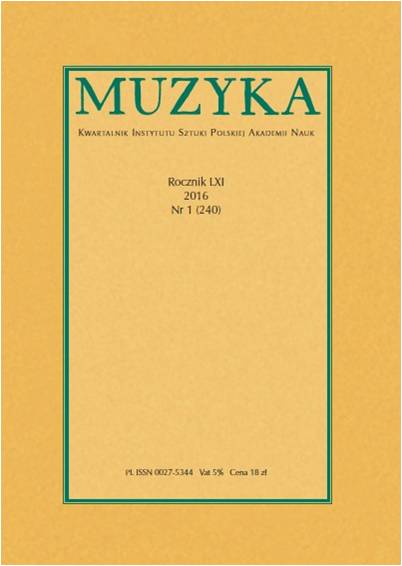
Iwona Sowińska: Chopin idzie do kina. Kraków 2013
Book review of "Chopin idzie do kina" by Iwona Sowińska
More...We kindly inform you that, as long as the subject affiliation of our 300.000+ articles is in progress, you might get unsufficient or no results on your third level or second level search. In this case, please broaden your search criteria.

Book review of "Chopin idzie do kina" by Iwona Sowińska
More...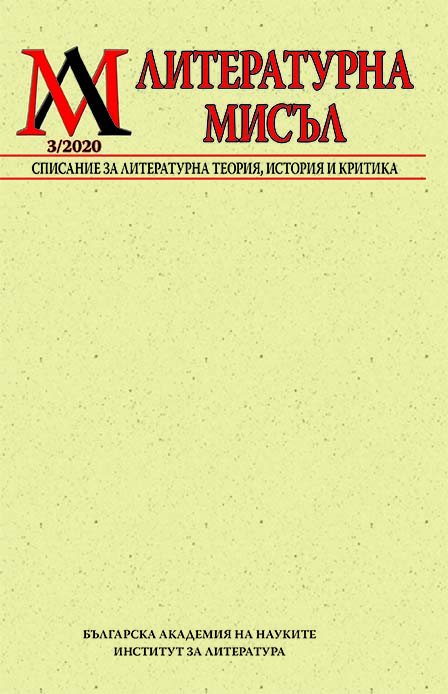
The article was written in the frames of the project „The Transition after 1989 – the interpretations of historical transformations, social experience and cultural memory in the modern Bulgarian literature and culture“. In the main focus of the present study are two movies. The first one – „Gori, gori, ogunche“ (Burn, Burn Fire) (1994), scenario – Malina Tomova, director – Rumyana Petkova, is a metaphor of the initiated by the Communist government process of the violent change of Turks or Arabian names of Bulgarian Muslims, realized in 60-ties and 70-ies of 20th century. The second movie – „Radiogramofon“ (Radiogram) (2017) – scenario and director Ruzie Hasanova – is a more concrete narrative about a particular family story, which happened in the beginning of 70-ies. Analysed in a confrontative aspect both movies show different social and cultural aspects of the so-called Time of transition and the time after it. This approach helps to understand the main topics of changing Bulgarian society – the collective images, the attitudes towards history, the problems of group identities in new social, political, economic and historical period.
More...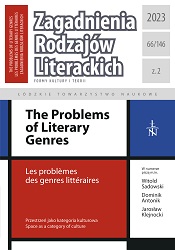
Review of: Michał Chudoliński, Mroczny Rycerz Gotham. Szkice z kultury popularnej, TAiWPN Universitas, Kraków 2023, ss. 381 [e-book]
More...
Thesis. Today’s students are very much influenced by globalisation and advances in technology. This has brought about some changes in the attitudes and perceptions of the new generation of students which are worthy of attention. The present study aimed to shed light on one such shift of focus and explored Iranian literature students’ preferences for either reading or watching the movie adaptations of literary works. The second aim of the study was to examine the reasons for their preferences and to analyse them to see where they originated from. Concept. To this end, a mixed methods design was used in which the quantitative data was gathered through a questionnaire from the University of Mazandaran English literature students (N=141). In the questionnaire, their tendencies towards either watching movies or reading literary books was explored. Based on convenient sampling, for the qualitative data, a semi-structured interview was conducted with 5 students from each category to find the reasons behind their preferences. The data from the interviews were transcribed and then content analysed. Results and conclusion. The results showed there existed a higher tendency towards movie watching (58%) among these students. Content analysis of the students’ responses to interview questions also revealed some factors affecting their inclination towards movie watching. The main reason for such a tendency was mentioned to be time constraints. Oher reasons were disclosed which will be reported in the article. The implications of the study will also be discussed fully under conclusion.
More...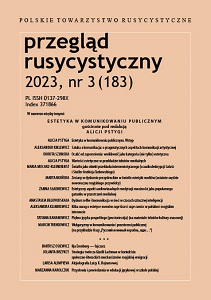
This paper attempts to analyze the verbal exponents of lighting in audio description - a service for the blind and visually impaired - for two films by Andrei Tarkovsky: Solaris and Stalker. An analysis was carried out of the designators fixed in the frame and receiving their verbalized equivalents in the audio description. These include the source of artificial illumination visible in the frame, the source of fire as heat-emitting and light-emitting energy, natural lighting as the effect of solar radiation, and radiance as the reflection of light rays. The linguistic exponents and stylistic figures used in intersemiotic translation were then analyzed. The linguistic means are single lexemes with the semantics of light, qualitative adjectives, verbs, and collocations. Among the stylistic figures, the following were distinguished: synesthesia, contrastive expressions, metaphors, and comparisons. The research showed the cumulative nature of the description of light in short segments.
More...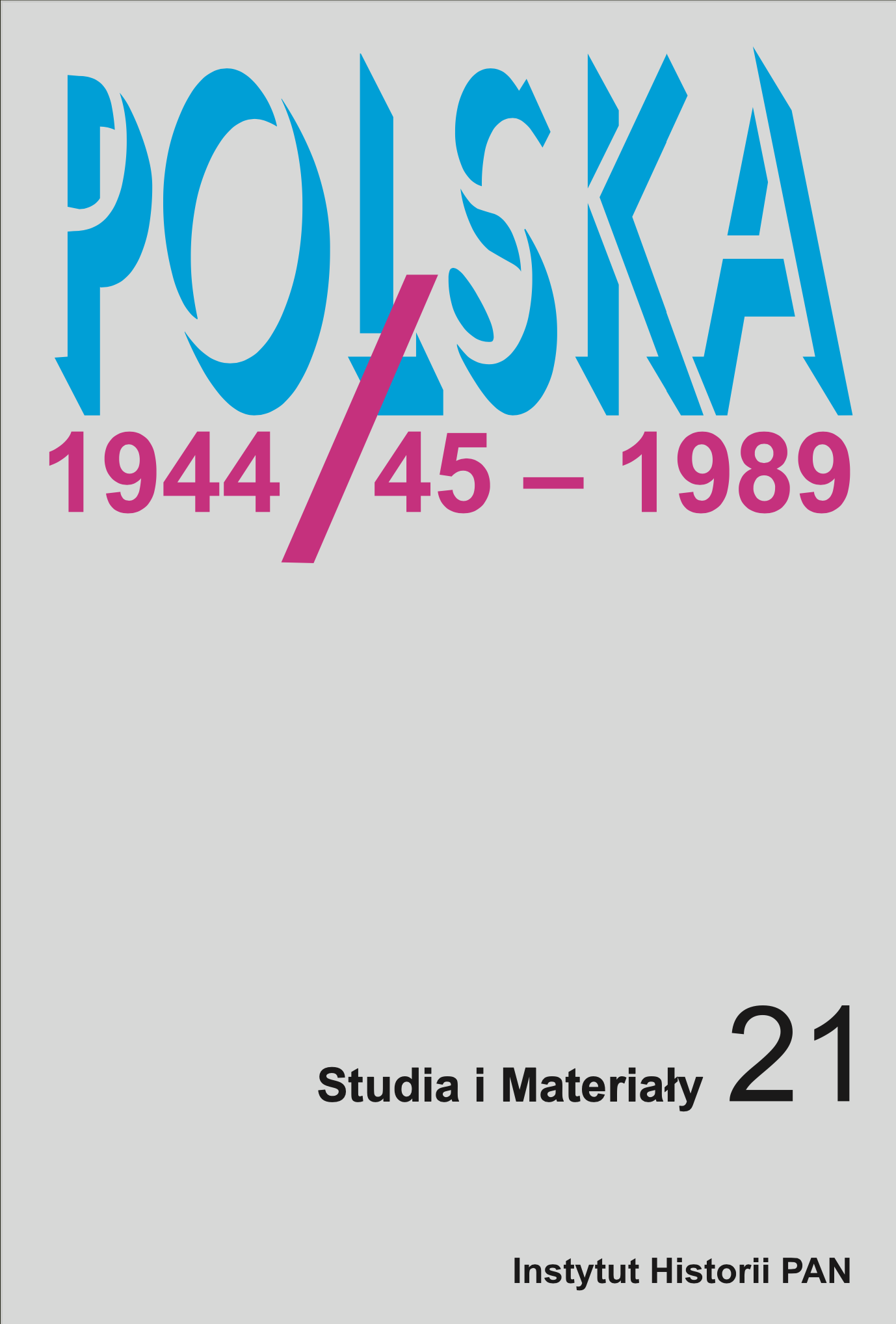
This article reviews a monograph in the field of visual history by Piotr Zwierzchowski on the cin- ematic representations of the Polish United Workers’ Party. Its author treated cinema as a source of knowledge about history and culture. Focusing on film representations of the Polish United Workers’ Party allows us to look at the history of Polish cinema differently. The scale of the issue reveals the everyday life of cinematography, which, after all, is not limited to films generally regarded as out- standing. A large proportion of the films discussed in the monograph belong to such productions. Few among them were works that went down in the history of Polish cinema. The author focuses primarily on the relationship between cinema, politics, ideology and rhetoric. He draws attention to the relations between different discourses and uses a variety of sources and cultural texts. Con- sidering newsreels, documentaries, feature films, series and television plays, he goes beyond the existing canon by considering films by lesser-known filmmakers. He also makes use of the press of the time and archival material, thanks to which he has been able to reconstruct the fate of individual films, the processes of negotiating meanings, the interpretative strategies of the time, the relation- ship with other cultural texts and, finally, the details of the political contexts.
More...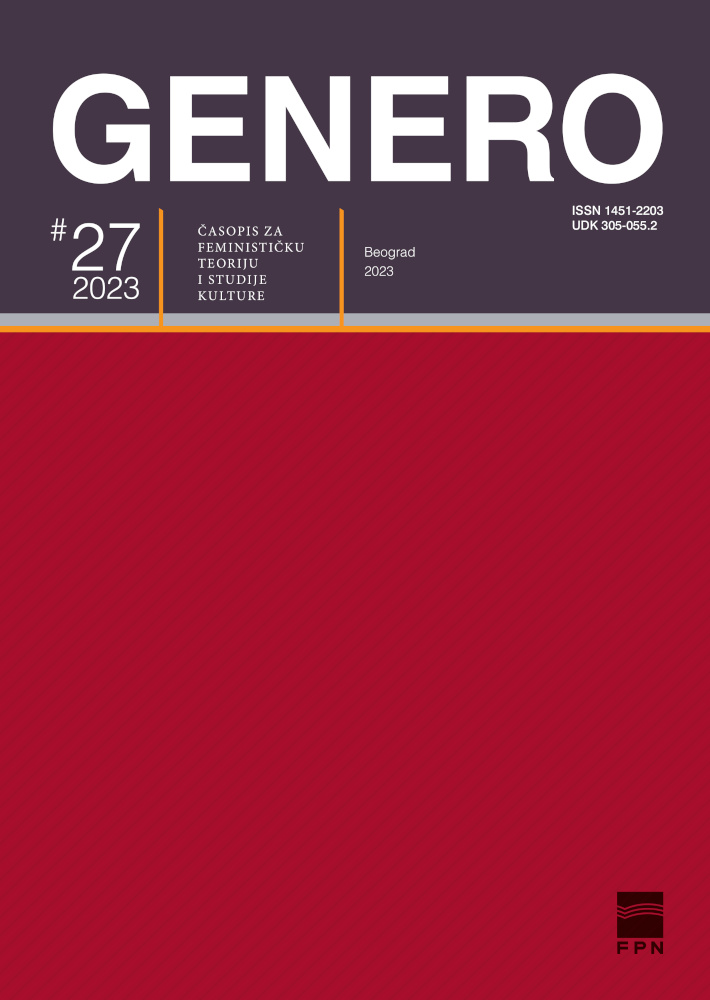
This paper discusses the feminism of the Barbie movie, which premiered this July, instantly sparking debates about its messages and their meanings. Following a short explanation of some modern forms of third-wave feminism, the focus has been shifted towards the movie itself, its plot, and the reactions it has engendered. On the one hand, this Greta Gerwig movie is lauded as a feminist movie that raises significant questions about the role of women in today’s society, while, on the other, it has been on the receiving end of criticism on account of the superficiality of feminism it advocates and the way it depicts men. The reputation of the doll itself additionally emphasizes the ambivalent status. Barbie is simultaneously an embodiment of women’s freedom to be whoever they want to be but also a means for imposing unrealistic beauty standards. Mixing everything mentioned above has produced a movie that has achieved cult status even before its premiere, generating a record-breaking profit, simultaneously raising questions regarding the definition of feminism and its necessity once again.
More...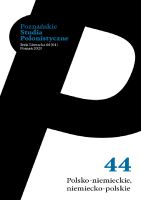
The subject of this paper is the image of Berlin and Germany that emerges from two film adaptations of the novel Berlin Alexanderplatz. The first one, a 1980 TV series by Rainer Werner Fassbinder, closely follows the letter and spirit of the original 1929 novel; we see a faithful recreation of the material world and the mindset of German society in the final years of the Weimar Republic. In the second one, a 2021 cinema production by Burhan Qurbani, the plot is modernised. The main context of the film is the plight of refugees and economic migrants in contemporary Germany and the problems portrayed are linked to issues of race and post-colonialism.
More...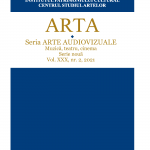
The polemical character of the paper is explained by the need to reconsider the generative factors in the configuration of the new cinematic wave of the “thaw” era. Unlike the popular postulate, the author launches the novel conception: the change in the face of Soviet cinema is entirely due to the ideational-aesthetic performances of the most ideologized genre of historical film, the historical-revolutionary one. Namely in the films, dedicated to the Russian revolution, there happened a reversal of values of the existential equations: “man – history”, “individual – collective”, “general – human-soviet”. Appealing to the generous virtualities of the mythical-archetypal analysis, we specified the change of the vector of cinematographic knowledge in the Balada haiducească/Outlaw Ballad by updating the patterns of the mythical-folkloric complex as the millennial censorship of the nation. Assigning the inspired cinematographic work both to the context of the “thaw” era and to that of the exponential Balkan genre – the film with outlaws, the singularity of the local discourse inscribed in the identity grid of the neo-romantic type was stated.
More...
The seventh decade of the XX century of the communist regime is significant in many ways. First of all, it is through the brief “liberalization” of the political, social and cultural life of the former Soviet country, which followed the Stalinist frost of sadness. Nonetheless, the ideological constraints in the field of culture and the media have not completely disappeared. A fundamental feature of the research paradigm of British cultural studies explains that no cultural-artistic practice or cultural product can be understood out of context that is why the study of identity dimensions of media culture in the given period requires a complex grid of analysis. The factual state of culture in general, but also of media communication in particular, can be fully understood only if we proceed to a deconstruction of the mechanisms of propagandistic transfiguration of “socialist reality” and of the cultural or media discourse in the society of those times.
More...
In the second half of the XIX century provincial traveling circuses were quite common in Bessarabia. The first attempt to build a permanent circus in Chișinău was made on April 22, 1911. In March 1912, the owner of the Bristol hotel, Constantin Kolomandi, wrote to the Construction department of the Bessarabian Provincial Board a new request for the construction of a stone two-story building of the circus theater at the corner of Mikhailovskaya and Schmidt streets (today Mihai Eminescu and Metropolitan Varlaam streets). In May 7, 1912, he received an official building permit. In general, the construction of the building of the circus theater, which was supervised by the city architect Vladimir Țiganco, was completed on October 21, 1913. Later, the “Express” cinema was opened here. In the post-war period, this building was housed by the Moldavian Drama Theater. And in 1954, the premises were transferred to the Moldavian Philharmonic. But on September 24, 2020, the cultural heritage of Moldova was damaged as a result of a fire which seriously damaged most part of the building of the National Philharmonic „S. Lunchevici”. Today the building is in the need of restoration in order to preserve its historical, architectural and artistic value.
More...
The paper focuses on the features of emotional perception of screen-displayed videos and images, when the neural response of the viewer is included into the subject fi eld of neuroaesthetics—an interdisciplinary sphere of knowledge at the intersection of art studies, philosophy, psychology of perception, and neuroscience. Th e study describes innovative methods of neuroscientifi c research for studying the reception of a “screen product.” One of such methods is determining the algorithm of evoking certain impressions in the mind of the viewer— “consumer” of the screen culture. Further ways of development of dialectical ties between neuroscience and screen studies are formulated as a research hypothesis. Practical signifi cance of the study is determining the parameters of regulatory/manipulative infl uence of the audiovisual stimuli on the viewer’s behavior in the contemporary situation when objective and subjective realities are gradually substituted by the virtual reality.
More...
The ideological background, the complex of problems related to dictatorship, occupation of foreign territories, freedom, national identity, etc. addressed by director Vlad Druc in the feature films “Alternante/Alternatives (1991) and “Frontiere/Frontiers” (1992) in the dialogue “Quo vadis, populi?” (“Where are you going, people?”) will be elucidated parallel to the investigations of the ways of expression through the cinematographic language. At the basis of these films, being, for the most part, the cinematic chronicle, the director’s work on this material is of interest, which on the screen goes far beyond the informative limits, obtaining the qualities of an artistic-aesthetic state, which provokes meditation and even emotions. These are the repercussions of a profoundly creative attitude on the part of the director V. Druc towards all the components of his cinematographic discourses.
More...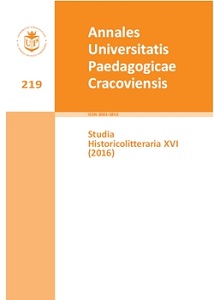
The National Digital Archives stores the audio-visual contents of Jerzy Ficowski’s legacy – photos, audio recordings, and films. The most numerous type of data found there are photographs. Many of the photos are representative of Ficowski’s research interests. There are Gypsy photos (especially those taken by him while traveling in Gypsy caravans), Judaica, photos regarding Witold Wojtkiewicz and Bruno Schultz (particularly those taken by Jerzy Ficowski during his stay at Drohobych), photos taken by Ficowski as illustrations for „Karty z raptularza”, portraits and photos of Jerzy Ficowski himself and of his family. As far as audio recordings are considered, there are private records, monologues, radio interviews, Judaica, and recordings of poetry readings. Another important preserved form of Ficowski’s legacy are films of his family, recorded between 1930 and 1936, records of performances, klezmer concerts, poetry readings, video relation of the ceremony of awarding him with the “Man of Borderland” title, and drafts for film of Paweł Woldan “Amulety i definicje” (1998).
More...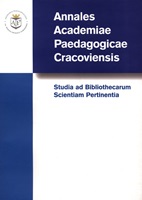
In 1978, Jan Rybkowski filmed the novel by Sienkiewicz The Połaniecki Family, which divided the Polish society and critics when it was published in 1895. The director made his film adaptation in the form of a TV miniseries, and that fact was particularly important. The main characters of a TV miniseries begin to function as personality models, especially when they are played by popular, nice actors, and the opinions and views expressed by them are in a sense legitimized and ennobled by the very fact that they are heard in many households. That imposes on the director of a TV miniseries an additional responsibility, and it forces first him, and then the viewers and critics, to consider the fundamental question of the reasons behind the decision to process that particular literary work, thus, to establish the criteria of the director’s choice, and to identify the ideological and artistic value of the original serving as the basis of the film adaptation. In what genre can we classify that seven-episode series? Many people considered that se-ries to be a film of costume and manners. One also encounters opinions emphasizing its melodramatic features. What personality models are proposed by the main characters of the series? What conclusions can be drawn by the viewer of the film version of The Połaniecki Family? That life is not an idyll, although good will of both spouses may bring good results? That man is weak, but he/she can fight his/her weakness? That family is the fundamental cell of the society? Could this novel have been filmed slightly differently? In her article, the au-thor tries to answer these and other questions.
More...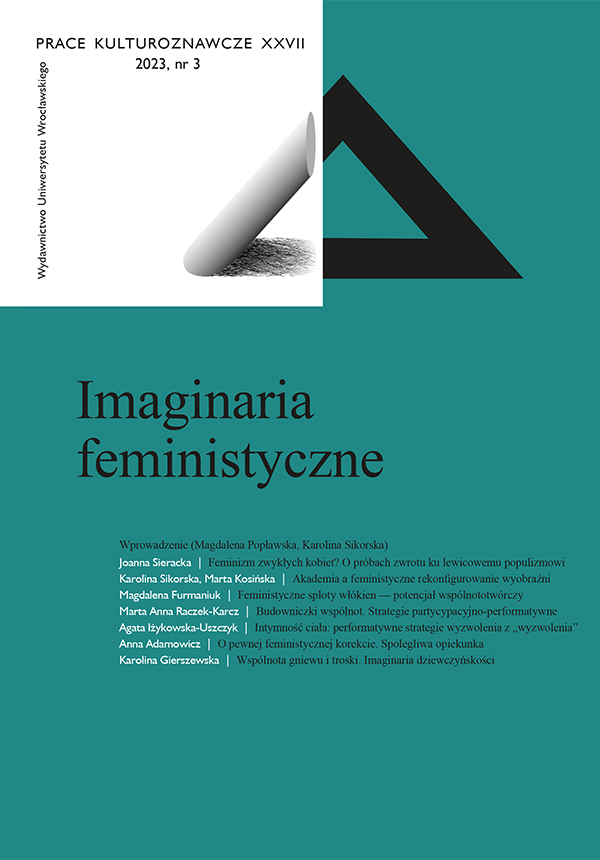
Within feminist theory, the concept of ethics of care introduced by Carol Gilligan is considered to be an original and interesting model for describing patterns in which empathy expresses and mani- fests itself in the process of constituting young female subjectivity. Using it as an analytical tool, the author examines selected narrative models in works of popular culture addressed primarily to young audiences. Care and anger are treated as emotions that have a huge impact on the decisions made by the protagonists of the TV series The Wilds and the book and film series The Hunger Games, who are motivated by concerns for the safety of loved ones and the demand for a specific idea of justice. Narrative strategies built in this way allow the audience to perceive teenage protagonists in experi- encing various forms of oppression as figures of empowered and agency, which in turn increases the spectrum of the attitudes of independent girl heroines presented within the popular culture.
More...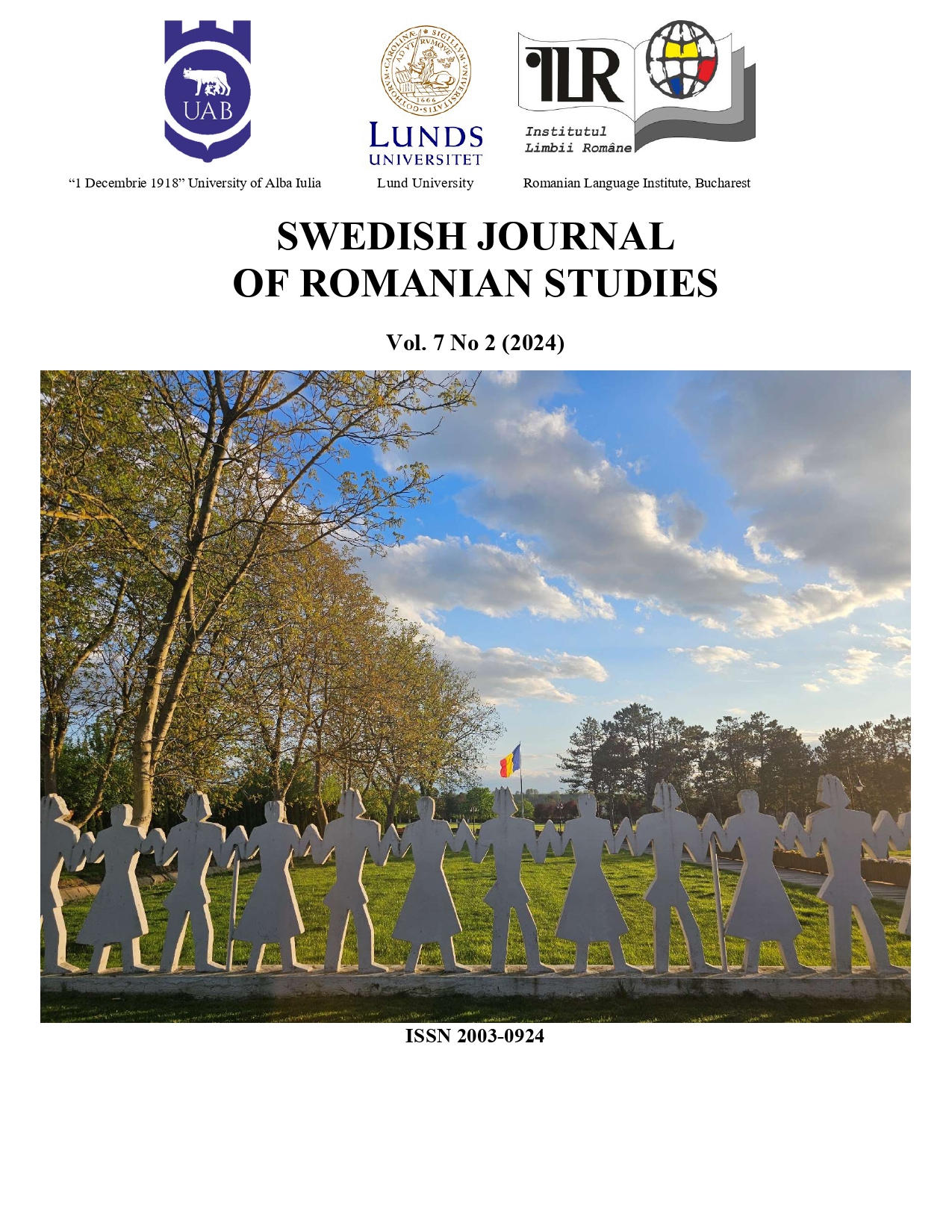
The foreign reader and viewer can find nothing better -or faster, given the exigencies of modern life- than the film as an introduction to the character, history, identity of a nation. With the awards garnered by directors like Cristian Mungiu and Nae Caranfil, new interest has been focused on Romania’s film, community, and history. That is why, an investigation regarding the Romanian early cinema would be necessary in the field of improving education from abroad. The purpose of this paper is to analyze a number of aspects, such as the importance of incorporating a course on cinema in foreign language teaching, one of the major goals being the opportunity to educate the students in the field of movies and thus offering them distinct cultural perspectives. However, this article does not plea for the need of a pedagogy of media studies in higher education, given the complexity of the topic. It rather aims to focus on the history of two Romanian movies: The Independence of Romania (1912) and The Rest is Silence (2007) and highlight the reasons why an urban icon of the city of Tampere is called “Plevna”. This paper sets out to analyze the two mentioned Romanian films who proved to be interesting for Finnish students since they depict an episode of our common history, the 1877 War of Independence (The Russo-Turkish War). At the same time, the paper aims to familiarize them with the allure of the event when Romanian and Finnish soldiers fought shoulder to shoulder on the same front, at Plevna. The Romanian film, The Independence of Romania shot in 1911-1912, was the first feature film to be kept almost entirely in the Romanian National Film Archive; the other one, The Rest Is Silence directed by Nae Caranfil (and representing Romania’s first entry into the 2009 Oscars) and inspired by The Independence of Romania wanted to show the real story of our first full-length filmmaking. Therefore, this latter film contains like a palimpsest an older mute movie, discovered in Romanian Movie Archive. The current article draws upon the insights provided by the Finnish students after watching the two films and summarizes their conclusions. In other words, these lines provide a behind-the-scenes glimpse of what they learned and discovered. The films were met with positive reviews, and we tried to follow the students’ spontaneous reactions and emotions. An important part of our work was to put in perspective the two inspiring patriotic marches which are commemorating the departure of the Romanian and Finnish soldiers at Plevna in the Balkan’s theater of War: Drum bun! (farewell song composed by Ştefan Nosievich to the lyrics of Romanian patriot Vasile Alecsandri) and Kauan on Kärsitty / Long have suffered, a well-known patriotic song of the Finnish Guard (Suomen kaarti). This article tangentially discusses the role of perception in educational activity, which is presented under two correlated aspects, namely: the activity carried out in this sense by the teacher and by the students and the role of cinema in creating cultural memory from a general perspective, in a way that transforms the manner we think of film and its social importance. This article starts from a very particular point of view, as we discovered by pure chance the name of Plevna building in Tampere, and goes to a more general aspect, which is the battle of Plevna, one of the most important episodes from Romania’s modern history.
More...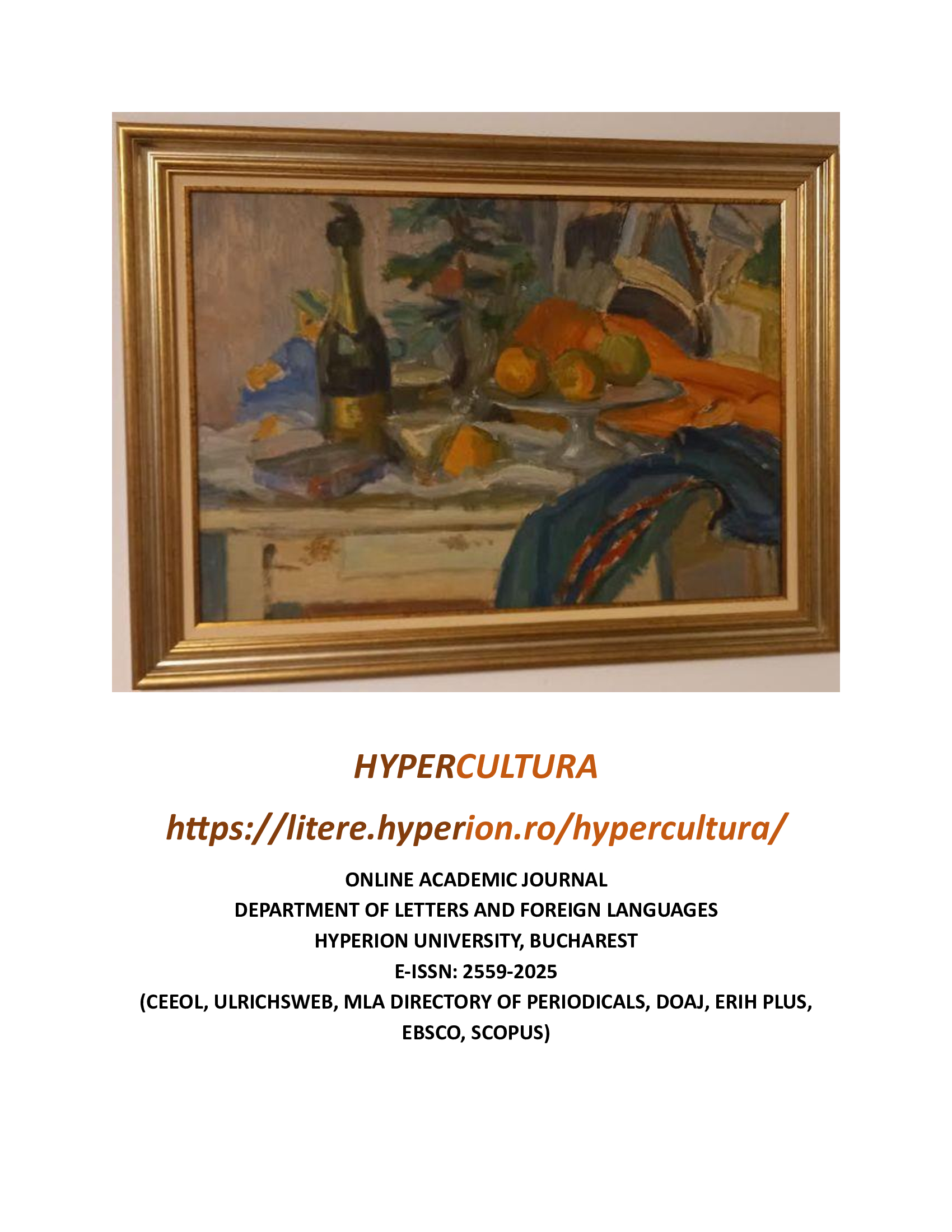
Domestic violence in the Indian context becomes complex with the interplay of law and prevalent socio-cultural dimensions vis à vis women. This article analyzes the representation of domestic violence in select Hindi films: Agni Sakshi (With Fire as Witness) (Ghosh, 1996), Daman: A Victim of Marital Violence (Subjugation: A Victim of Marital Violence) (Lajmi, 2001), and Mehndi (Henna) (Khan, 1998). These films conceptualize the legalistic matter of domestic violence in two ways: one, in the form of battering, sexual, emotional, and verbal abuse by a psychopathic husband, and two, as family violence caused by the social evil of dowry. By exploring the fictional screening of the issue of domestic violence, this article analyzes how such depictions have been co-related to contemporary legal discourses. Our article investigates how films contribute to the understanding of domestic violence within the context of legal matters and reveal the underlying feminist or patriarchal values. Through textual analysis of the film texts, we hypothesize that they often reinforce patriarchal narratives by portraying domestic violence as isolated incidents related to husbands’ psychopathy or dowry issues.
More...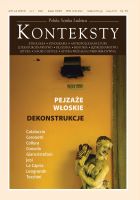
In the presented text, Giuseppe Balsamo, the self-proclaimed Count Cagliostro, born in a poor district of Palermo, is merely a point of departure for taking a closer look at Sicilian self-narratives. The author meticulously follows and exposes heroic legends - particularly those concerning the origin of the Sicilian mafia - about the island’s past, discovered in the Beati Paoli sect, active from the end of the 18th century and regarded by numerous historians as the original archetype of the modern mafia. Other findings were made in literature, particularly in Beati Paoli, a novel by Luigi Natoli, an example of cult literature particularly popular among contemporary members of the mafia organisation. Finally, M. Collura demonstrates that the image of the mafia conceived as an organisation offering justice and protecting the poor (a portrait additionally enhanced by such outstanding films as The Godfather) has as much in common with the truth as Balsamo’s confabulations about himself (his biography is an example of “absolute falsehood”).
More...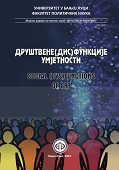
The paper analyses identity indeterminacy as a contemporary life strategy in the novels of From Nowhere to Nowhere (Nigdje, niotkuda; 2008) and Dnevnik jednog nomada (Diary of A Nomad; 2017) by Bekim Sejranovic, as well as in the movie entitled Nomadland (Chloé Zhao, 2020). By referring to postmodern identity theories, the paper deals with issues of refugees, wandering, vagrancy, nomadism, exile, people without official documents (so-called sans-papiers), stateless people and alike, with emphasis on the works of prominent authors in the field, such as Zygmunt Bauman, Stewart Hall, Manuel Castells, Ivan Colovic, Michael Hart, and Antonio Negri. The aforementioned issues are approached in two ways, with the concept of identity rejection being confronted with the one denoting giving up a homeland. The former implies a voluntary act and discarding identity determinacy and being eradicated from a (ethnic) community by virtue of free will, whereas the latter carries in itself an idea of coerced abandonment of one’s identity and identification with one’s previous living space, mostly due to war hardships, to impossibility of making living on one’s own, and to disturbed living conditions. Both of these concepts are highlighted in the movie in question and the novels by Sejranovic respectively, and they point to identity indeterminacy and absence of need for being related to a certain territory, which represents the dominant paradigm of life in the contemporary postmodern world.
More...